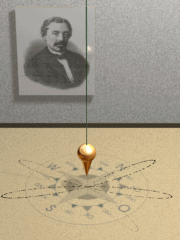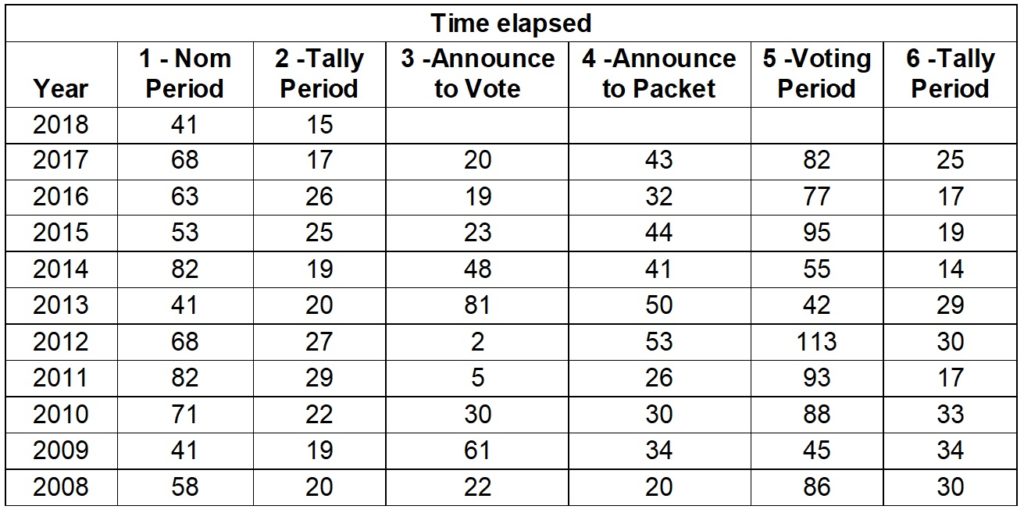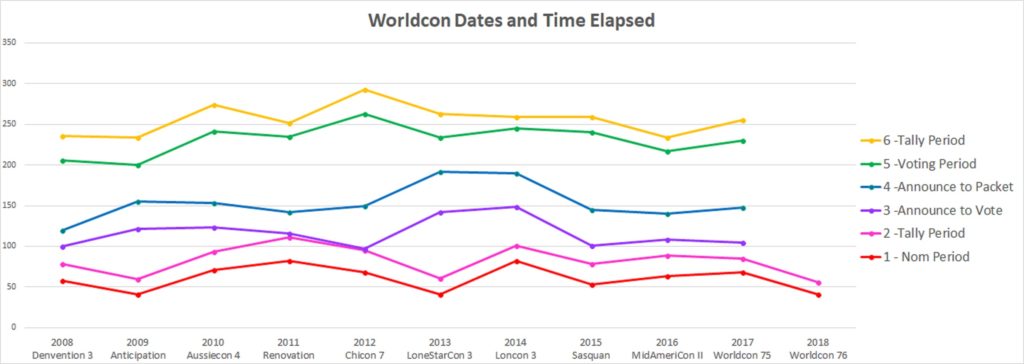
Toronto fanartist Taral Wayne, whom I’ve known since he began drawing and writing for my fanzines in the Seventies, died July 31. His good friend and helper Steven Baldassarra had heard from him earlier in the day and was bringing over a few things he needed. But when Steve arrived there was no answer to his knock at the door or to his phone calls. He asked the building superintendant to open the door and check. They found Taral lying down in his living room, unresponsive. Paramedics were summoned but were unable to revive him.
Even though Taral has been writing about his deteriorating health for years it’s a shock that he suddenly isn’t here — he always discussed his physical state in such an indomitable tone. Taral suffered from myasthenia gravis and needed a powered chair – dubbed Traveling Matt — to leave his small apartment. In early 2017 he suffered a stroke but slowly recovered to the point that he told followers of his DeviantArt site the only residual effect was occasional slurred speech.
Due to all his self-revelatory writing I knew a lot more about his life than most other fans’, which is the very reason his death leaves such a hole.
Taral was an eleven-time finalist for the Best Fan Artist Hugo – and terminally pissed off that he never won, let me tell you. However, his selection as the Montreal Worldcon’s (Anticipation) Fan Guest of Honor in 2009 was a step in the right direction toward recognizing his many contributions to fandom.
And I really loved what the committee cooked up as a kind of fan lounge, a “virtual apartment” with walls composed of life-sized photo reproductions of Taral’s place – all the bookshelves, the displays of his aircraft models, action figures, and other collections, including ancient coins and Confederate currency.
Below is a small mockup, followed by a set of photos taken inside the real thing.



Taral first discovered fandom in late 1971 as a result of buying a used copy of Fantastic magazine in a neighborhood variety store. He answered an ad in the back of the magazine that said “Fandom Lives in Canada. Write OSFIC” and attended the Ontario Science Fiction Club for the first time in November 1971. The club met in a room at a Toronto public library. After meetings he hung around with Victoria Vayne and Robert Charles Wilson (Bob, in those days) who would become his longtime friends.

In Taral’s first decade as a fan he registered a number of memorable achievements. He designed the logo for Iguanacon 2, the 1978 Worldcon, incorporated in the plaques on the Hugo bases. He contributed a card to Bruce Pelz’ famous Fantasy Showcase Tarot Deck (published in 1980). He was Tuckerized in a novel – made the unseen sorcerous presence who ruled the Taral Empire with an iron hand in Linda Bushyager’s fantasy Master of Hawks (1979).
He also co-edited a fine faanish newzine, DNQ – an abbreviation for “do not quote,” fanspeak for the things people blab and yet expect the reader to keep secret.
Victoria Vayne and Taral started DNQ on April 28, 1978. That was just three months after I began publishing File 770, but the two had already decided that other newzines (like Locus and, guess who!) “Do not fulfill the need for what is essentially the soul of fandom.” They would write for the people who became fans to “collect coke cans, paint ourselves blue, eat fudge icing out of the can, and to bid for Worldcons five years past.”
Once DNQ threw down the gauntlet, File 770 began to shadow box with them in a Jack Benny/Fred Allen kind of rivalry that would outlast DNQ itself. Taral’s feisty humor carried over to a 1982 cover illustration for an issue of File 770 where Garfield the cat sits in a litterbox reading File 770 and says, “So that’s what he lines my sandbox with when he’s out of kitty litter.” The perfect imitation of the cat’s bug-eyed expression and jaded attitude showed this was said in the same spirit as one late-night host taking a potshot at another, so that the artist, editor and readers were all in on the secret: our friendship had been sharpened by the rivalry, and because of it we ended knowing each other much better than ever.
I remember in the early 1990s when the mailman delivered a worn manila envelope stiffened with a sheet of cardboard, addressed in Taral’s handwriting, containing eight or ten sheets of incredible black-and-white cover art that he wanted to show to a larger audience.
One of them depicted Saara Mar, an extraterrestrial Kjola, Taral’s alien alter ego, companion and foil, quietly lounging on a beach towel in an airless moonscape, taking in the earthshine. Saara Mar in this picture looks like a teenaged girl but is countless years older and wiser. When she “discovered” the Earth in April 1970 her first contact was the artist — Taral. Saara Mar commented freely on human foibles and contradictions – she’s from outer space, after all, not someone who had to hold her tongue like, say, that fanartist from Toronto. Sometimes she made her point wordlessly, or was content to say nothing. That’s the enviable thing about Saara Mar: she’s relaxed in any environment, social or extraterrestrial.

Taral tried to break into the traditional sf art field professionally. Outside sf he illustrated small magazines, in the 1980’s contributing to an American magazine named Ruralite. He did restorations of Vaughn Bodé art appearing in fanzines for Rare & Well Done Bodé, and research and illustration for John Robert Colombo’s book Years of Light (1982). Taral was a versatile freelancer: he also made cross-stitching patterns, and produced cards for the Tank Vixens Card Game (2004). For a moment it looked like Tor was going to discover him when he was retained to do a series of illustrations for Rudy Rucker’s 2002 novel Spaceland – but the assignment was merely to re-render the author’s own sketches, not the breakthrough he wanted.
The bulk of Taral’s freelance career was the creation of art for private commissions, numbering more than 3,000 inked, colored, or penciled items.
As he told it, his professional high point was working on the Furry comic Tales of Beatrix. Created by Steve Gallacci, the stories were a collaborative effort — drawn by Taral, co-written by Gallacci and Taral. Unfortunately, the title launched during a recession in the comics industry and the series about a rabbit girl superhero ended after only a few issues.
Taral was, in fact, a co-founder of furry fandom, whose beginnings he traced to 1984, the year Marc Schirmeister mailed out the first funny animal apa, Rowrbrazzle. According to Taral, although some insisted furry fandom existed years before then, there was no sense of furries being a separate community for funny animal appreciation. They would have described themselves then as comic book fans, animation fans, manga and anime fans. With Rowrbrazzle the word furry appeared for the first time. Members started calling themselves furries, and the sense of a separate fandom followed.
Taral would fly out to Southern California every few years to visit Marc Schirmeister and other furry artists and writers in the area. On one trip in the early Nineties he came to my Van Nuys apartment and memorably entertained himself by dressing one of my Hugos in G.I. Joe attire. The last time I saw him was a few years ago, before the pandemic, when he, Marc and I met for lunch.

Taral created the File770.com banners. Before we settled on the current one, we used to unveil a new variation annually after the ball dropped on New Year’s Eve – like this one with Sherman and Mr. Peabody.

His masterpiece was the current banner based on the famous Prague astronomical clock face.

Taral was a devoted fanzine fan, acknowledged by insiders who made him Guest of Honor at Ditto 8 (1995), picked him for the 2008 Rostler Award, named him “past president of fwa” (Fanzine Writers Association) at the 2018 Corflu, and gave him a FAAn Award for Unrecognized Fan Achievement at the 2019 Corflu.
Murray Moore edited a fanthology of his writing for Ditto 15 titled Old Toys: A Tarable Collection.
Well worth reading is the warm remembrance Taral’s friend of more than 50 years, Robert Charles Wilson, has written on Facebook about the long walks and talks of their younger days, “intense, often silly or naive, but wide-ranging and non-stop and seldom less than fascinating.”
I always imagined a great fan artist like Taral comes home from the market looking like Rorschach filled his shopping cart, because something in the budget has to give so he can afford art supplies. If an extra commission comes in he spends it on an artifact that ignites his graphic imagination – a favorite action figure, a model spacecraft, a Roman coin – and goes home to draw the story it brings to mind. And sends that art to be published in a fanzine or displayed on a website. I was privileged to have Taral’s art in my fanzines for more than four decades.















